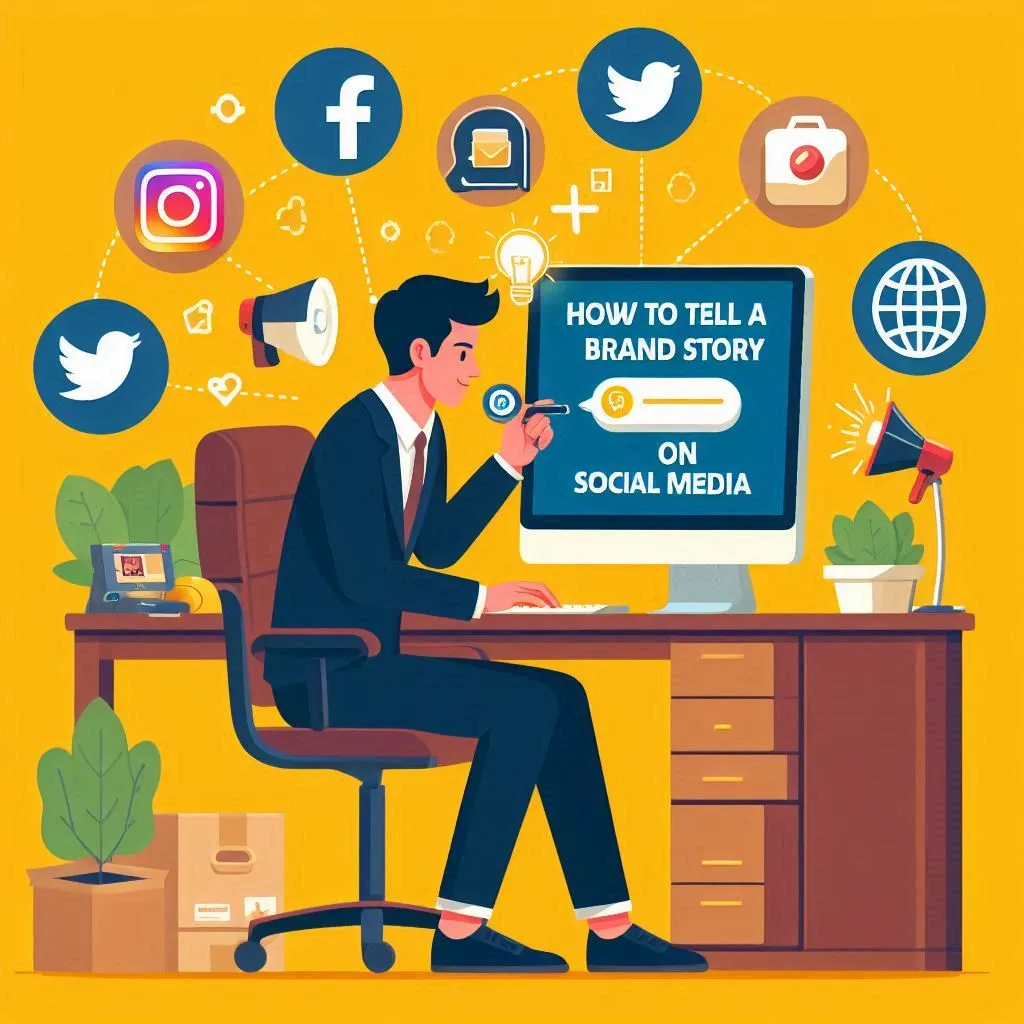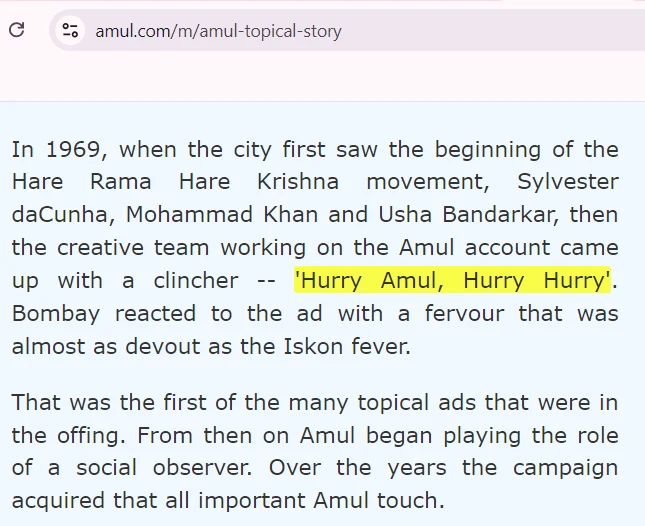
Almost everyone is on social media nowadays. Just look around. Do you know anyone who is not using any form of social media? The chances are very low.
Because 462 million people use social media in India. Out of this if you just assume that 0.1% out of this is your ideal customer profile then almost 2,60,000 potential customers are online.
Now just think how incredible social media it is if you think from a business owner’s perspective.
You can tell your brand story, communicate why your brand is superior and convert those customers into your followers.
So, let’s understand the importance of social media for storytelling and give you actionable insights on how to use it to connect with your audience.
Table of contents
- What is Brand Storytelling?
- Why Does Telling a Brand Story Matter?
- How to Use Social Media for Brand Storytelling
- In Conclusion — Tell Your Story Build Your Brand
- Frequently Asked Questions
What is Brand Storytelling
Brand storytelling is the art of sharing your brand’s journey in a way that captivates and resonates with your audience. It’s about conveying the essence of who you are and what you stand for.
The best brand stories focus on the ‘why’—the reasons behind your business’s existence, the problems you aim to solve and how you make a meaningful impact in your customers’ lives.
A great example of this is Nike. Nike doesn’t just sell shoes— it sells a vision of athletic empowerment, pushing boundaries and celebrating the perseverance of athletes.
Why Does Telling a Brand Story Matter?
Before we jump into the “how,” let’s get clear on the “why.” Your brand story is more than just the history of how your company started.
It’s the narrative that includes your purpose, values and the unique way you make a difference in your customers’ lives.
In a way, Stories have the power to evoke emotions and emotions are often what influence customer decisions. This is how powerful storytelling can be for a brand.
It goes beyond products. You have to build an emotional relationship with your customers.
Take Amul, for example. Amul’s mascot—the Amul girl—has been telling the story for decades.
They first started doing this in 1967. They started doing topical hoardings. Topical means those posts that share some current news or represent an ongoing movement.
Coming back to the point, the first hoarding was put out in 1967 during the Hare Krishna movement.
It said, “Hurry Amul, Hurry Hurry”. So they did a wordplay on the word “Hare” used in the “Hare Krishna” mantra.

After that, the brand became a social observer and started doing topical hoardings for every major event.
Now, they have started incorporating social media as well for topical stories.
See these posts for example :
This not only makes the brand relatable but also shows its awareness of its environment, making Amul feel like a brand that evolves with the times.
How to Use Social Media for Brand Storytelling
If you’re not using social media to tell your brand story, you’re leaving a huge opportunity on the table.
Social media allows you to communicate with your audience where they already are. But here’s the catch — telling a brand story on social media requires more than just posting a few pictures or videos.
It is more about crafting an authentic narrative that resonates with your audience. We know this is difficult to understand. But don’t worry you will get it by the end of this section.
Because this step-by-step guide will help you understand what we exactly mean when we say narrative.
Here’s how to tell your brand story.
1. Know Your Brand Story First
Before you dive into social media, you need to be crystal clear on what your brand story is. Ask yourself:
- Why does your brand exist?
- What makes your brand unique?
- What are the values and missions behind your brand?
This will clear a lot of confusion for you. Once you have these answers on paper, you will gain clarity for yourself and will be able to communicate them with the same clarity. And if you are still confused about your brand story — consult a branding agency.
Let’s try to understand it properly with the example of Paper Boat. The founders wanted to bring back the charm of traditional drinks. What’s the emotion associated with this product? Nostalgia right? Well, they make it a point to tell stories that evoke nostalgia.
Here are a few of their social media posts :
Look how simple it is. And also read the captions. See how subtle their posts are but they manage to promote their products in the caption.
You can also tell a brand story on social media with the help of a social media marketing agency.
2. Choose the Right Platforms for Your Story
Not all social media platforms are created equal and each one caters to a slightly different audience.
It’s important to pick the right ones for your brand. You need to go where your audience is.
Let’s see how each platform works and what’s unique about it. And remember it’s not like if you are using one platform, you cannot use another.
Most brands have a presence on all platforms. It’s typically a good idea to incorporate all platforms for brand storytelling if you have the resources.
It is great for visual storytelling. If your brand story revolves around beautiful imagery—like fashion, food or lifestyle—Instagram is the place to be.
You can use different content formats here. For example reels, carousel posts, static posts and stories.
It also allows you to run targeted ads to expand your reach. Since this blog is about brand storytelling on social media, we won’t go into the strategy part.
But if you want to know about Instagram marketing, you can read this blog :
Read: How to use Instagram for marketing?
Facebook is also great for visual storytelling. However, the age group that you want to target is different. The majority of people who use Facebook globally are between 25 – 34 years of age.
Moreover, it’s our observation that most young people who are currently 20 years or younger (Genz and Gen Alpha) are not that active on Facebook in India at least.
So, the kind of content that you can post on Facebook is almost similar to Instagram. Hence you can use a mix of both platforms to tell your brand story.
X (Earlier Twitter)
This platform is perfect for bite-sized stories and real-time engagement. Again, if your users are active here you can use this platform. But remember storytelling should be consistent.
Remember we gave you an example of Paper Boat’s Instagram posts.
See how their storytelling is alike on Twitter also. We will talk about this in detail in the next section. For now, you can check out this Twitter post by Paperboat.
Happy Independence Day! pic.twitter.com/xD35At6S87
— Paper Boat (@paperboatdrinks) August 15, 2023
This is your go-to if you’re a B2B brand or want to share more professional success stories. Think about a brand like Tata Consultancy Services.
They often share insights into their innovations and corporate initiatives on LinkedIn, telling a story of progress and thought leadership.
Also Read: How to Optimise LinkedIn for B2B Marketing in India
3. Be Consistent with Your Story
Your audience should get the same feeling about your brand, no matter where they find you.
Whether you’re posting on Instagram, sharing a Facebook update or tweeting, make sure your content is always reinforcing your brand’s story.
Consistency builds trust and trust turns into loyalty.
4. Engage with Your Audience
This is where the magic of social media truly shines. Unlike traditional media, social media is a two-way street.
It’s not just about broadcasting your story; it’s about having a conversation. Engage directly with your followers. Reply to their comments, repost their stories and encourage them to interact with you.
5. Pro tip: Make Every Campaign a Story
Every campaign you run on social media should have a story behind it. It doesn’t matter if it is a product launch, a seasonal sale or a milestone celebration — crafting a narrative around your campaign makes it more engaging and memorable.
Coca-Cola does this brilliantly. Remember that Coca-Cola ad with the famous song “Umeedo Wali Dhoop”. Don’t worry if you don’t. Just watch this and you will recall.
This is the level of storytelling you want to achieve on social media as well. Now that you have reels, you can create more such stories.
Partner with a digital marketing agency to create and communicate a phenomenal brand story.
In Conclusion — Tell Your Story Build Your Brand
Your brand’s story is the key to connecting with your audience on a deeper level and social media is the perfect tool to help you do that.
To do this, you need to define your story and consistently share it across social media platforms. This will help you become a brand that people don’t just buy from but connect with emotionally.
But first, we want to understand what kind of brand story you want to tell. We saw different ways of storytelling by different brands already in this blog.
What kind of story do you want to tell and in which form? Tell us your story at hello@florafountain.com and we will share what kind of story you can tell and how.



